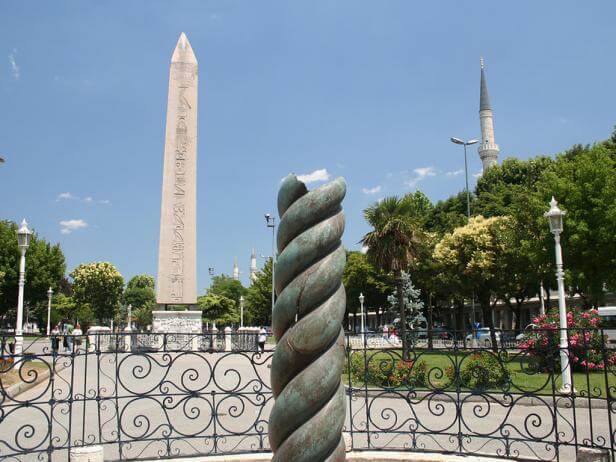Hippodrome – Chapter 2

HIPPODROME IN OTTOMAN PERIOD
After the success of Istanbul, almost nothing stay behind aside from a few landmarks and a couple of relics and Kathisma. These relics were utilized the building development so as to be modified that recorded place. Some time ago Hippodrome was utilized as chariot/auto races, yet then it was a place that was played javelin(national Turkish diversion) by people in general. As a result of that was likewise named as Horse Square. From that point onward ,Horse Square or Hippodrome was encompassed by new working in Ottoman period, for example, Ibrahim Pasha Palace (killed Sadrazamn of Suleiman the Magnificent),famous Blue Mosque worked by Ahmet I, intriguing Hagia Sophia bath(the result of the considerable design Sinan) and Fıruz Aga Mosque(the treasurer of Sultan Bayezid II).
That intriguing Hippodrome has likewise seen many dining experiences, wedding functions like the famous marriage of Sultan Hatice and Ibrahim Pasha and the circumcision blowouts of sultan’s child. Today it is a swarmed put that numerous sightseers visit and many projects are appeared.
KATHISMA
A sort of little Palace called Kathisma was situated at the north piece of Hippodrome (Location of Today’s German Fountain) with development based on 24 segments. This little castle had people in general room, the eating corridor and the uncommon compartment having a place with the gatekeepers. At whatever point Emperors were presented to the stone rain or face open strikes, they were getting away to the primary castle through private passage.
Each sovereign has added to be decorated Hippodrome with marble, bronze and copper statues brought from Rome, Greece, the Aegean Islands. Other than this glorious statues, the representations having a place with Perikles(a effective statesman) ,Augustus (the main ruler of Rome), Lusimahos (one of the Alexander the Great’s governors) had been found here. Be that as it may, numerous landmarks were annihilated amid ”1204 Latin Invasion ”and ”The Crusades”. In whatever is left of that, there was no whatever else with the exception of bronze stallion statues and a few different statues.
KONSTANTIN II OBELISK
Firstly, Konstantin monolith had been attempted to be raised by Konstantin II yet he fizzled on the grounds that he passed on. Also, following 30 years the story was rehashed; taking after head Thedosius I couldn’t worked because of kick the bucket. At long last, after years Arkadyus (395-408) was fruitful. This intriguing pillar raised by him gives decently data about Byzantine Plastic Art. It is situated in two tablets written in Greek and Latin upon the monolith.
Aside from that celebrated monolith, there is found another landmark named as ”Kathisma”. Thedosius I,his spouse and his children Arcadyus, Honarius joined by statemen, gatekeepers and the gathering of people were depicted in Kathisma (Emperor lodge).In expansion, the countries vanquished by Byzantines, the erection of Obelisk occasion, chariot/auto races, tummy artist, performers were shown on this stone.
GERMAN FOUNTAIN
Close to the northern end of the Hippodrome, the little gazebo styled wellspring can be found with lovely stonework.German wellspring otherwise called Kaiser Wilhelm’s Fountain.Once German head paid a state visit to Sultan Abdül Hamit II in 1901 and displayed this wellspring to the sultan and his kin as a token of fellowship.
Wellspring was initially inherent Germany, then transported piece by piece and collected in its present site in 1900.
German wellspring’s octagonal vault has eight marble sections, and arch’s inside is secured with brilliant mosaics.The monograms in the stonework speaks to the political union of Abdul Hamit II and Wilhelm II.




No Comments